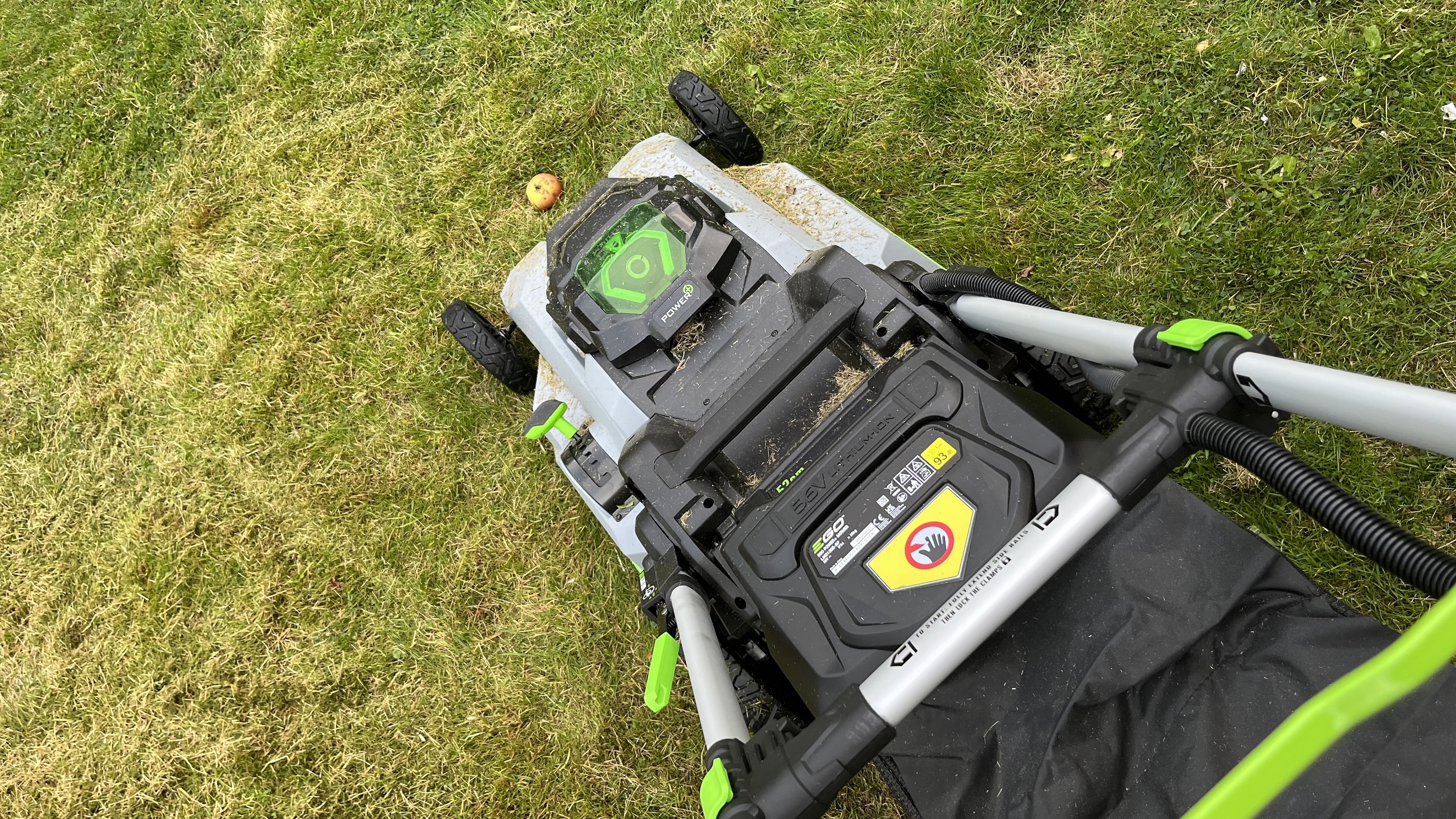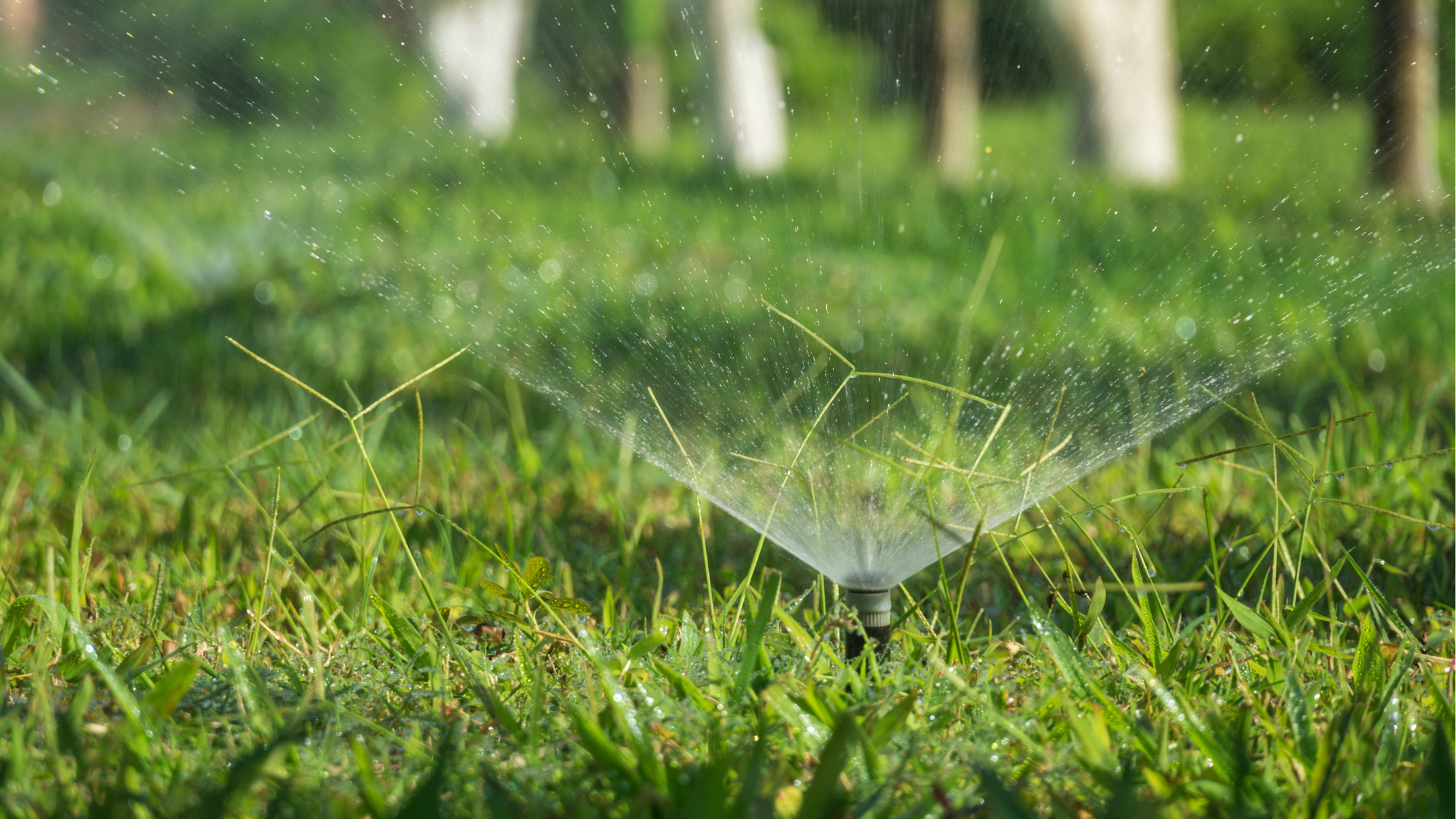How to aerate your lawn: an expert guide
Let your backyard breathe

Knowing how to aerate your lawn is essential if you want your grass to be as healthy as it deserves to be. While the best electric lawn mowers can help you create a healthier lawn, aeration is another key step for a beautifully uniform look. Learning proper lawn care can initially feel a little daunting, but aerating your grass is actually simpler than it sounds.
What is a lawn aerator and why would your lawn need it? Essentially, it's a process for helping your lawn to breathe, enabling your grass to become healthier. This involves perforating the soil with small holes that sit around three inches deep to enable air, water and nutrients to travel further down into the roots of your grass and plants. This means that these roots will be able to grow stronger and deeper, giving you a healthier and more vibrant lawn.
In fact, if you've ever wondered how to make your lawn greener, aerating your grass is actually one of the best ways to do it. So, how exactly do you aerate your lawn? We explain below, with expert advice from lawn expert Phil Catron.

Phil founded NaturaLawn of America (NLA) in 1986 when he saw a great need for nontoxic, organic-based lawn care. Phil has continuously led the company to be ahead of the industry curve, including developing and implementing the use of zero-phosphorus fertilizers several years before states began mandating it.
Quick steps: How to aerate your lawn
- Mow the lawn a few days before
- Moisten the lawn if it hasn't rained
- Prepare the lawn & identify hidden objects
- Aerate the lawn, thoroughly
Step-by-step guide: How to aerate your lawn
1. Mow your lawn

A few days before you aerate, mow your lawn at a mower height of approximately 1.5 to 2 inches.
Mowing your lawn lower than usual will make it easier to aerate, and will allow any following seed to come into better contact with the soil.
2. Moisten your lawn

If the days before you plan to aerate have been dry, water the ground thoroughly after you’ve mowed it.
"Make sure your lawn is moist but not waterlogged," advises Phil. Apply at least an inch of water as you’ll get better and deeper aeration in soft soil, andt it will make the job easier for you.
3. Prepare your lawn

"Pick up any sticks, twigs or leaves that may have fallen on the lawn" before beginning to aerate. You ideally want as much clear access to the lawn's surface as possible.
Then, use irrigation flags (or other visible markers like plant pots or thick branches) to flag any area of your lawn that might have hidden objects, such as tree stumps, roots, stones and precious flowers—as this will prevent you from running over them.
4. Aerate your lawn

For lightly compacted soil, go over your lawn once with your chosen aerator tool and then go back over it in a perpendicular motion (or a 'crisscross pattern,' as Phil suggests).
"Typically, you will want to make multiple passes over your lawn, ensuring good coverage. Overlapping passes will help ensure that the entire lawn gets aerated evenly," explains Phil.
FAQs
How do you know if your lawn needs aerating?
The first step is to figure out if your lawn even needs to be aerated. The main reason to aerate is to avoid soil compaction, which tends to occur with frequent walking on the grass, or if you're mowing it too often. Yes, even if you have one of the fanciest, best gas lawn mowers in the world, you can still overdo it on your lawn.
Have you ever been out walking and spotted fields with dry, dense and cracked soil? Well, those are all signs of compaction and you really don’t want that happening to your lawn. When the soil compacts it becomes solid, almost like a pile of bricks, and the roots of plants and grass have to work that much harder to access water and nutrients.
So you want to be aerating your lawn long before severe soil compaction sets in. If your lawn meets any of the following criteria, it’s likely a good candidate for some aeration:
- It gets heavy use, such as children riding their bikes or playing on it, or from pets bounding around all over it regularly.
- Your home is a relatively new build. Homes built more recently, particularly those in large developments, can have a shallower layer of soil and the topsoil has often been buried. These lawns require a little extra love to help them develop.
- Your soil base is heavy in clay content
- The soil in your yard is hard to the touch and/or rainwater tends to collect on the surface and takes a long time to absorb.
You can do a simple screwdriver test to confirm that aeration is needed. Take a screwdriver and stick it into your lawn’s soil, if you can slide it in easily then the soil is fine, but aeration is needed if you meet resistance.
Sign up to receive the latest news, reviews, buying guides and deals direct to your inbox
When to aerate your lawn for the best results
Lawn aeration is best done when your grass is in its peak growing period as this will help your lawn recover quickly. For cool-season grass, the best time is in early spring or late fall, and for warm-season grass, it’s late spring or early summer. However, there is an exception...
If you’re trying to get rid of lawn weeds or want to prevent them from sprouting up, we recommend avoiding early spring for cool-season grass and opting for fall instead. Why? Because early spring is when weed seeds are looking to germinate and the open holes that aeration adds to the soil provides those seeds with the perfect home.

If you have severely compacted soil and need to aerate in spring, opt for late spring when weed seeds have already germinated but before they’ve had a chance to flower and go to seed. Unsure whether you have cool-season or warm-season grass? We breakdown the two types in how to cut your lawn to the best height.
When it comes to the frequency of aeration, every two to three years is likely to be sufficient for sand-based soils. For clay-based soils, or if your lawn gets a lot of heavy use, you’ll want to make aerating your lawn an annual event.
Choosing the best aerating tools for the job
When it comes to aerators, you have two basic types: plug vs spike aerators.
A spike aerator has sharp 'tines' that make holes in the ground without removing any soil, and provides short-term soil decompaction. A plug aerator has hollow tines that remove a core of grass and soil from the lawn. This provides long-term soil decompaction as more air space is created.
For the best results, we recommend using a plug aerator as these are more effective at breaking up compacted soil. They’re also easier for large lawns as they’re usually mechanical, versus spike aerators that tend to be manual.
What to do after aeration
The best way to follow up your lawn aeration is to give it plenty of water and fertilizer, as this will help add lots of nutrients back into the soil. If you've used a plug aerator, we recommend leaving the soil plugs you removed from the ground on top of the lawn.
These will decompose and work their way back into the holes that you made. You may also want to consider laying down some grass seed in any of the areas where your lawn seems thin or patchy. If you have minimal rain for the next fortnight, water your lawn twice a week for the best results.
Then, knowing how to overseed your lawn is essential to providing your grass with the proper nutrients it needs to grow back healthier. As Phil explains, "aerating and seeding is one of the best practices a homeowner can do for the overall health and vitality of their lawn."
And once your grass is looking its best, why not turn your attention to some of the other gardening jobs that crop up from spring to summer? No matter whether you're in need of the best lawn edgers or the best tillers, there are plenty of ways to spruce up your garden.
Kathryn is a freelance health and wellness writer who is passionate about the mind-body connection, the role of food as medicine, and exploring how we can live in more sustainable and humane ways. A lover of the natural world, she’s at her happiest when walking the beach, staring out at the ocean, or when sat amongst lakes and mountains. For Top Ten Reviews, Kathryn covers more of our in-depth health content, ranging from diabetes news to vision care. And it isn’t just human wellness Kathryn is interested in - she also writes about the health of our furry friends over at our sister site PetsRadar.

